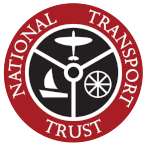Early Days
George Cayley used gliders in 1850s to understand the requirements of controlled flight. Principally the limitation at the time was a power unit combining lightness with thrust.
The internal combustion engine powered by paraffin made recognisable planes viable in the 1900s. Wright Bros, Bleriot, Col Cody. First revenue-earning flights in 1910 or thereabouts.
At start of WW1 Royal Flying Corps inaugurated as spotting for infantry support, initially using balloons as well as aircraft, including photography that allowed plotting of the trench lines on the western front. Battles with German rivals led to development of fighter capability, though firing rifles from planes was hazardous until the development of interrupoter gearing by Fokker. RAF inauguarated in 1918 as a separate service, combining army and navy air services.
WW1 flying aces, pilots demobbed in 1919 looking for work promoted air fairs offering joyrides to the public.
Float planes, Schneider trophy challenge. Tommy Sopwith, AV Roe. Lighter-than-air craft.
From Stringbags to Airliners
The 1920's started with single-engine, open cockpit biplanes built of wood and fabric and flying from grass fields - the DH34 being arguably the first commercial aircraft. Airport development and international regulation as growth yielded to order - Croydon designated the principal UK airfield in 1920.
Imperial Airways founded 1924 to develop scheduled services, initially within Europe but with ambitions to reach the outposts of empire. Carriage of post and VIPs, taking over from purely military communications links. de Havilland and Handley Page led aircraft design in Britain, culminating in the noted HP42 4-engined airliner, although in Europe Junkers and Fokker were showing more innovation.
Long-haul Services
How to span the oceans: Airships, Land planes or Flying boats. UK ceased airship development after R101 disaster but Germany continued until the Hindenburg crash.
The need for frequent fuel stops and the absence of developed airfields provided conditions for the heyday of the flying boat - Shorts Empire design, constructed on the Medway at Rochester. Improved construction techniques and more powerful engines favoured the development of all-metal multi-engine monoplanes: Armstrong-Whitworth Atalanta and Ensign, and DH Albatross, dominated Imperial Airways fleet in late 1930's.
WW2
Rivalry with Germany sparked rapid developments in military aircraft design. RS Mitchell's Spitfire and Sidney Camm's Hurricane fighter designs, both featuring the Rolls Royce Merlin engine were the glamour end of the spectrum, but were supplanted in the later stages of the war by the more powerful ground-attack Typhoon and Mosquito.
The 2- and 4-engine bombers including the Wellington and Lancaster had more lasting impact. After the cessation of hostilities versions of the military airframes were adapted for civil use, but flying was still slow and range limited.
During the war airfields were developed every few miles over SE England, displacing farms and diverting roads, while factories all over the country were engaged in fabricating planes, engines and armaments.
The Jet Age
The jet engine proved to be the major influence on post-war aviation. Devlopment of the jet had proceeded apace in Britain (Frank Whittle) and Germany during the war but came too late to enter service in production volumes. With the increasing capability of jet engines, the de Havilland Comet and Vickers' Vanguard and VC10 strived to continue Britain's lead in aircraft design but the US Boeing 707 and Douglas DC8 gained market leadership and rapidly displaced piston-engined aircraft.
In a last-ditch effort to sustain Europe's position, but also as a highly politically-charged project, Britain and France combined to create the Concorde, the only remotely successful supersonic aircraft in the commercial market. Meanwhile military aviation deviated ever further from civil aviation with the Harrier jump-jet, the Cruise missile and the unmanned drone.
Mass Travel
A shockwave impacted travel economics with the 400+ seat 747, the original jumbo jet, variations of which have been flying from the 1970s to the present day. The wide-bodied jet, with charters and budget airlines, changed flying from the preserve of the rich to an expected part of almost everyone's annual holidays. Concorde was relegated to a luxury niche: green concerns favoured planes with reduced cruising speeds and fewer engines. Entering the 21st century Boeing and Airbus now exercise a virtual duopoly of commercial aircraft manufacture.
![]()
Would you like to read more?
Then join us - much more information is published in our Digest and Members' Area.
Click become a Member for details of Trust membership.
